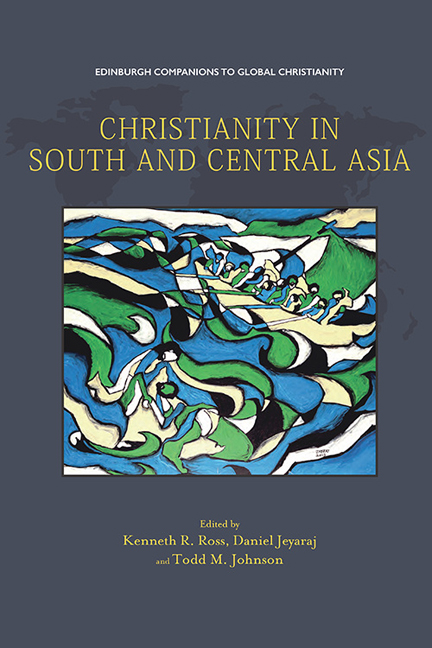North India
Published online by Cambridge University Press: 30 April 2020
Summary
As in other parts of India, there are many Christian communities in North India, having had their beginnings at different points of time and diverse in their religio-cultural expressions. The distribution of the Christian population in North India is varied, from less than 1% (in most North Indian states) to 22% in the Andaman and Nicobar Islands. Based on the apocryphal Acts of St Thomas, some historians claim the area around Punjab in northwest India as the cradle of Christianity in North India, tracing its origin to the preaching of the Apostle Thomas. But since no current community in North India traces its origin to the St Thomas tradition, many authors fix the emergence of the present Christian communities in North India to the sixteenth century – the beginning of Moghul mission.
The Catholic Church
The history of Catholic presence in some parts of North India is to be traced to the invitation Catholics received and the royal patronage they enjoyed from Emperor Akbar and other rulers of different religious traditions. At the invitation of the Muslim Emperor Akbar the Great, Jesuits – Fathers Rudolf Aquaviva, Anthony Monserrate and Francis Henriques – came to the court of Akbar at Fatehpur Sikri on 28 February 1580. They established their headquarters in Agra in 1601 and built a church there in 1604. They continued their mission to the Christian Armenians in the Moghul court, while also preaching to the locals and converting them to Christianity and making contributions to science and astronomy. A noteworthy contributor to science and astronomy was the geographer Jesuit priest Joseph Tieffenthaler, who left behind a map of the River Ganges and Ghogra. His book Historisch-geographische Beschreibung von Hindustan has 38 illustrations including maps, plans of cities and views of cities of North India in the eighteenth century, most of them drawn by himself.
In 1620 the governor of Patna, a Muslim convert to Christianity, invited the Jesuits to come there. In 1740 the Rajput chief Raja Singh of Jaipur, due to his interest in astronomy, invited the Jesuits to his kingdom. His support helped in the spread of the Catholic community in Jaipur.
- Type
- Chapter
- Information
- Christianity in South and Central Asia , pp. 119 - 130Publisher: Edinburgh University PressPrint publication year: 2019



